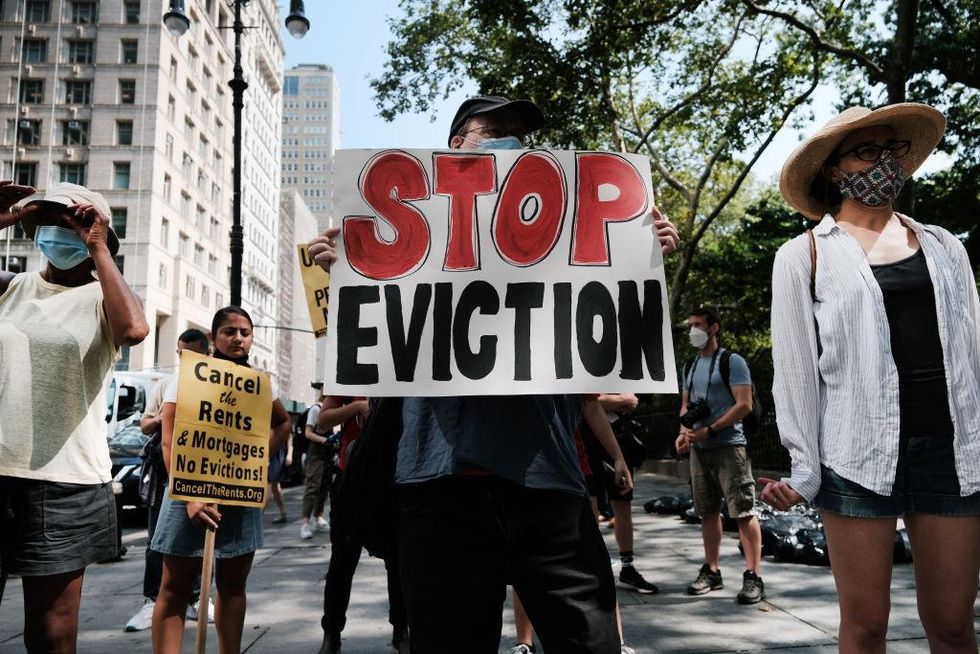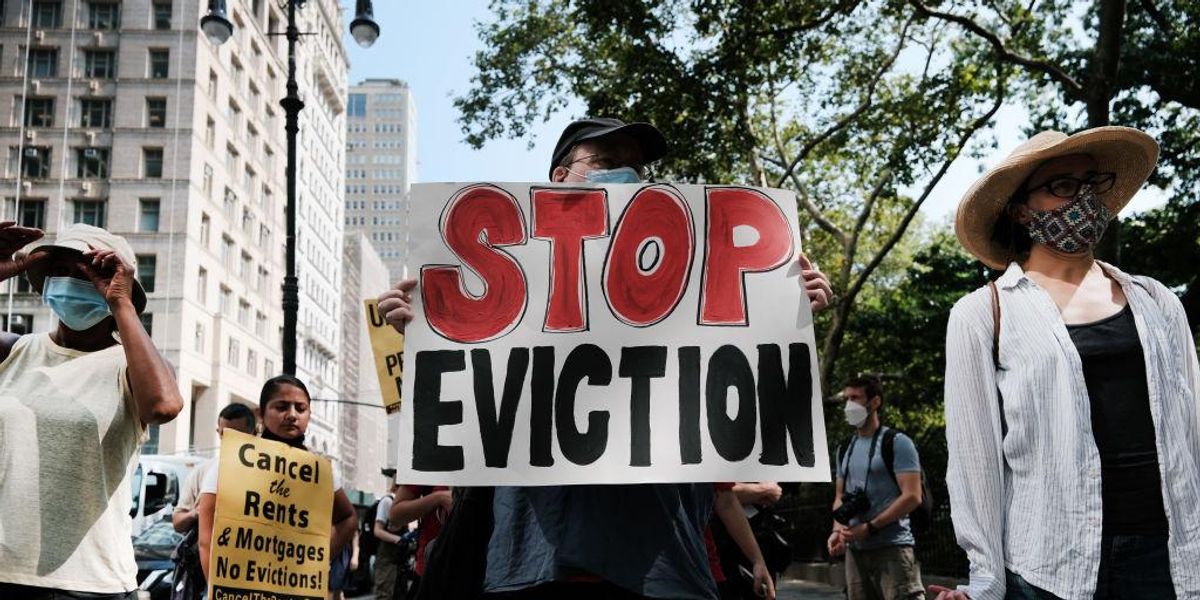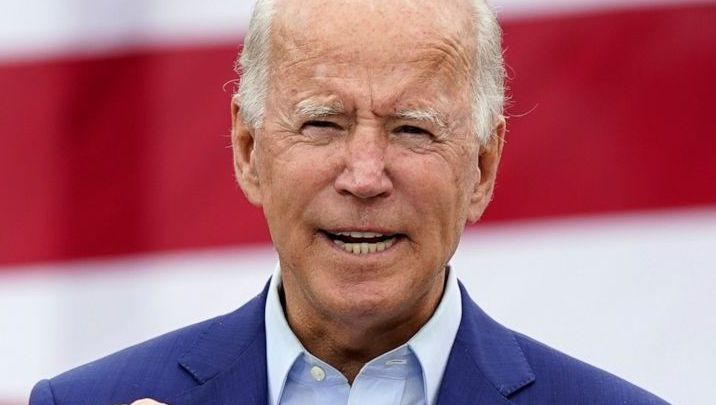
Last month, the Biden administration unveiled a slate of new agency-level actions it claimed would “protect renters and promote rental affordability.” The announcement followed nearly a year of public pressure from Congressional Democrats and the tenant-led Homes Guarantee campaign to get President Biden to crack down on rent-gouging and unjust evictions. In late January, the campaign sent the White House a list of 11 essential policy directives to include in its tenant protection plan.
Unfortunately, the White House’s final action slate was a far cry from what tenants — millions of whom are only one missed paycheck or life emergency away from eviction — had been asking for. In a press statement, Homes Guarantee campaign director Tara Raghuveer said the White House Plan falls short “of using the full power of the administration to regulate rent and address market consolidation by corporate landlords.” The plan consists largely of voluntary, incremental measures that do almost nothing to help tenants today. Almost all of the campaign’s essential demands are missing from the White House plan, including any material rent regulations or efforts to integrate good cause eviction protections into existing federal housing programs.
In lieu of these measures, the Biden plan includes something called the “Resident-Centered Housing Challenge”, a set of nonbinding voluntary pledges from real estate industry groups to “improve the quality of life for renters.” Among the Challenge’s participants are the National Association of Realtors (NAR), National Multifamily Housing Council (NMHC), and National Apartment Association (NAA), all groups who (as I’ve previously written in this newsletter) represent corporate landlords whose anticompetitive practices have fuelled the rental housing crisis. These groups spent much of the last year lobbying the White House to ignore tenants’ demands for robust rent regulations and tenant protections. Their efforts ultimately succeeded, with the final Biden plan failing to include the bare minimum that tenants had asked for.
If the White House thought they would be rewarded by the industry for caving to its demands, they were sorely mistaken. NAR and NMHC immediately issued crocodile tear-laden press statements arguing the Biden plan contained “duplicative and onerous regulations” that would “drive housing providers out of the market” (as if private developers are doing a great job solving the crisis on their own currently!). NAA, saying the quiet part out loud, boasted in a press release that their lobbying efforts had “helped avert an executive order advanced by renters advocates and members of Congress, which would have imposed immediate policy changes.” That’s right, they openly bragged about keeping life terrible for tenants through sheer force of Washington muscle.
Journalism should be about holding the powerful accountable, not reprinting their talking points.
Taken together, the real estate industry’s public statements and behind-the-scenes lobbying paint a clear picture of what’s really going on here: corporate lobbyists flexed their power, got the White House to fold, and are publicly warning Biden not to test them again.
Unfortunately, instead of exposing this underlying dynamic or pushing back on the real estate industry’s lies, many media outlets are instead quoting industry press statements without fact-checking their claims orproperly reporting on their lobbying work. CNN and Yahoo! News both quoted press statements from NAA President Bob Pinnegar and NAR President Kenny Parcell (not that one) claiming the White House’s plan would increase housing costs for renters and was inferior to supply-focused policy alternatives. Forbes and Marketwatch likewise quoted NMHC’s press release trashing rent control as a “failed policy” and praising the group’s members as “competitive [and] resident centered.”
None of these outlets compared the industry’s “sky is falling” assertions about Biden’s policies (or federal housing regulations in general) to independent economic analyses to assess whether their claims had any merit.
Worse, none of the outlets listed above mentioned these groups’ functions as lobbying fronts for rent-gouging private equity landlords. NAR, for example, was described by CNN and Yahoo! News as merely a “real estate industry representative group,” with no mention of the fact that it was 2022’s biggest lobbying spenderin the entire country, includingand spent millions to kill the Build Back Better Act’s sorely-needed investments in public housing supply. Marketwatch characterized NMHC as an “industry group” while Forbes referred to it merely as a “private housing actor.” Neither outlet mentioned that NMHC’s “competitive [and] resident-centered” members are among the nation’s biggest corporate landlords and pandemic evictors, or that NMHC has previously lobbied for lucrative corporate tax loopholes and against the CDC’s eviction moratorium.
Marketwatch likewise referred to NAA as another “industry group,” while CNN and Forbes both described it as a “network of over 95,000 members owning and operating more than 11.6 million apartment homes globally” – a definition taken straight from the group’s own website. Despite quoting NAA’s press statement, it seems none of these outlets read the whole thing: NAA’s open admission in its press statement to killing an executive order on rent-gouging is nowhere to be found in the CNN, Forbes, or Marketwatch coverage.
The media’s deference to industry is nothing new. Last October, I wrote for this newsletter about how the mainstream press often presents real estate lobbying groups as neutral “experts” when reporting on the housing crisis, and fails to disclose their obvious conflicts of interest. Just a month after I wrote that, NPR’s Jennifer Ludden again proved my point by quoting NMHC spokesman Jim Lapides for a story on rent control — without even once explaining what NMHC is or disclosing who its members are.
Even reporting about the industry’s own lobbying efforts lacks vital context. In a Politico story about industry lobbying published one week before the White House plan’s release, RealPage chief economist Jay Parsons told reporter Katy O’Donnell that federal regulation was unnecessary, as “the balance of power [in the market] has shifted toward renters — they’re going to have more options, more competitive pricing and better deals.” Nowhere in O’Donnell’s piece does she mention that RealPage is currently being sued by renters for seemingly helping a cartel of corporate landlords artificially inflate rents in violation of federal law.
While it’s not inherently a faux pas to quote industry reacting to policies that could affect them, the problem comes when industry’s claims are taken at their word unquestioningly — especially when the same credulity isn’t extended to tenants. It’s fairly common to see groups like the Homes Guarantee campaign referred to as “activist collectives” and the like by the mainstream press, in such a way as to signal to readers that this group has a political perspective and their views should be taken with a grain of salt. That’s fine, but reporters should also apply the same approach when quoting industry groups who have their own political agendas. Too often, if an industry group has an acronymed, dull-sounding name and dresses its lobbyists up in nice suits and clean haircuts, they’re taken as the serious “adults in the room,” even when what they’re saying is utter nonsense.
For examples of good coverage of Biden’s plan, look to alternative media.“Democracy Now!’s Amy Goodman, for example, spoke to Tara Raghuveer and tenant organizer Davita Gatewood about how Biden’s plan actually measured up to tenants’ material needs and prior asks of the administration (during Goodman’s interview, Raghuveer called out the National Apartment Association by name for its gloating press statement and anti-tenant lobbying work). Similarly, The Intercept’s Ken Klippenstein, doing what many mainstream journalists apparently failed to do, actually read the NAA’s full press statement and highlighted the group’s gloating about killing a tenant-backed executive order. Indiana University Law Professor Fran Quigley, writing for Jacobin, likewise cites Raghuveer’s and the housing industry’s reactions as evidence of the weakness of Biden’s plan.
Housing reporters in the mainstream press need to learn from these examples and do a better job of accurately covering the rental housing beat. Organizations like the National Association of Realtors aren’t neutral forums where industry professionals chitchat: they’re lobbying groups which exist to make their members richer, often at the expense of renters. They should be considered just as political as tenant’s advocates, if not more so. Journalism should be about holding the powerful accountable, not reprinting their talking points.




